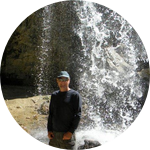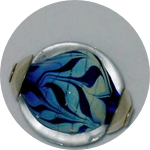About This Project
Many cities have proposed greening initiatives to offset local global warming, but these are difficult to measure and monitor. Cities are big compared to a thermometer, but small compared to satellite images–affordably measuring temperature is problem that is not well addressed with current technology. We propose to develop WeatherCubes, a set of affordable heat sensors, which we will use to measure the effectiveness of greening initiatives in Baltimore.
Ask the Scientists
Join The DiscussionWhat is the context of this research?
Heatwaves are now the deadliest form of climate hazard, one that is expected to grow in frequency and severity as our climate warms. Cities are especially affected because of their tendency to be hotter than rural areas- this effect is called the Urban Heat Island effect and is due to urban development and industrialization. As we replace forests and fields with parking lots and high rise buildings, we use materials that hold more heat, reduce evaporative cooling, and produce more heat-trapping air pollution.
Together, this produces a warm micro-climate of several degrees or more. The availability of low cost sensors has increased, making this a prime moment to use a wireless network to monitor the urban heat island.
What is the significance of this project?
Many cities have begun to plan for climate change. Some studies have even suggested that greening initiatives can fully offset 20th century warming, but this has not been fully supported by observations. Part of the obstacle is the lack of cost-effective monitoring technology.
Baltimore is beginning a wide-scale effort to climate-proof the city by planting more trees, installing white roofs, and other green infrastructure. Urban planners need specific numbers to help justify costs, and having real-time information from WeatherCubes can help them achieve this. Understanding urban temperature and micro-climates can help city planners, disaster management and public health experts reduce the effects of heat exposure now and in a warmer climate.
What are the goals of the project?
We aim to use WeatherCubes, a low-cost environmental sensing station, to measure the effect of parks and green infrastructure on heat in Baltimore. We will build twenty WeatherCubes and deploy them around the city. Each station will contain several different temperature and humidity sensors, with different prices and precisions, to allow us to evaluate what level of data resolution and quality the WeatherCube can provide at varying price points. This approach will allow us to investigate how well the study questions can be answered by cheaper or more expensive sensors.
At the end of the project, we will have a data set that will provide insight into how effectively greening initiatives cool Baltimore. This data will also help to refine the WeatherCube design.
Budget
Materials will help us build, test, and deploy our WeatherCubes, a completely wireless network of thermometer/hygrometers. We estimate that each sensor node will cost $62; we aim to buy 20.
Data fees will help pay for data costs- the WeatherCubes transmit data as text messages, so we'll incur costs as the field season goes on. This includes two 3g modems at $70/modem.
Endorsed by
Meet the Team
Anna Scott
I’m a PhD student at Johns Hopkins University studying urban climate in Baltimore. I’ve led field campaigns studying urban heating everywhere from inner city Nairobi to rural Alabama, but Baltimore is my home, and I think we deserve a great weather station network.
Yan Azdoud
I am a Postdoctoral fellow in the department of Civil Engineering at the Johns Hopkins University. My research is about optimization in computational solid mechanics. My expertise for the weathercube project lies in industrial design and production.
Chris Kelley
I'm an environmental engineering PhD candidate at Johns Hopkins University. My research focuses on how low-cost sensors and microprocessors can expand our capacity to affordably and collaboratively monitor water quality worldwide. I think the WeatherCube project is a great opportunity to conduct important climate research while developing useful, open-source hardware for public monitoring of the environment, and I'm happy to be involved in the hardware and firmware design.
Project Backers
- 45Backers
- 150%Funded
- $2,611Total Donations
- $56.76Average Donation





























